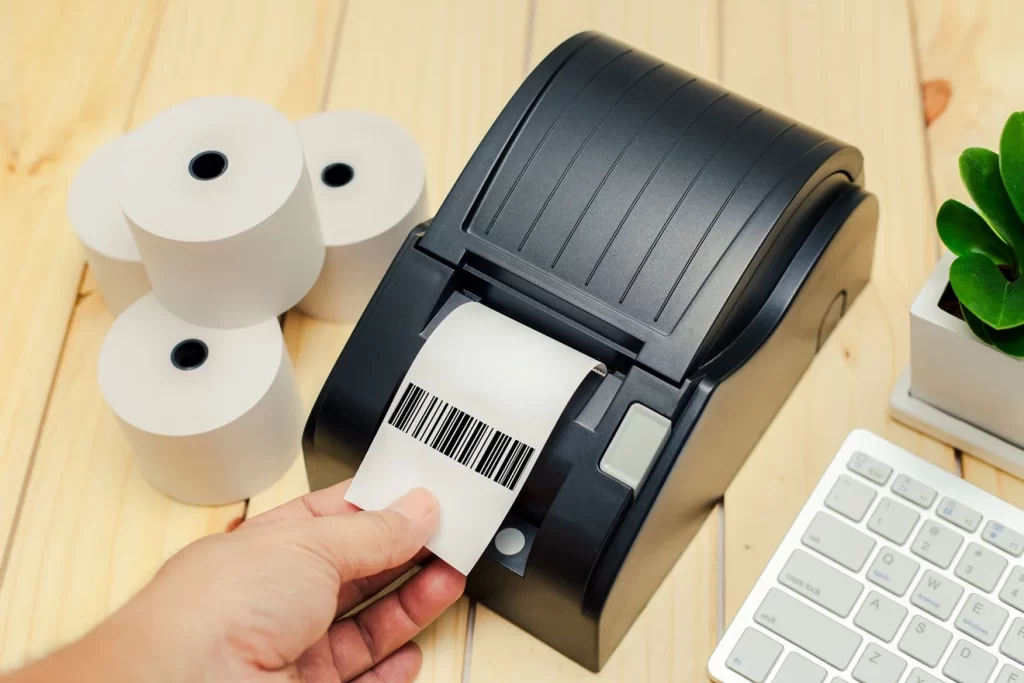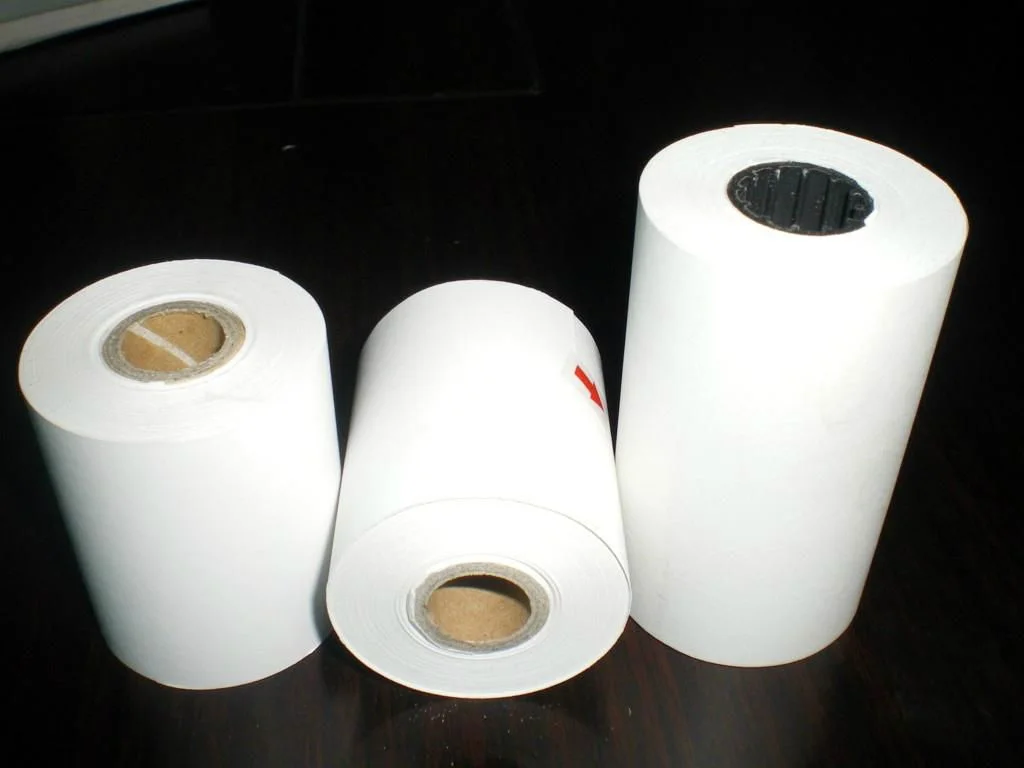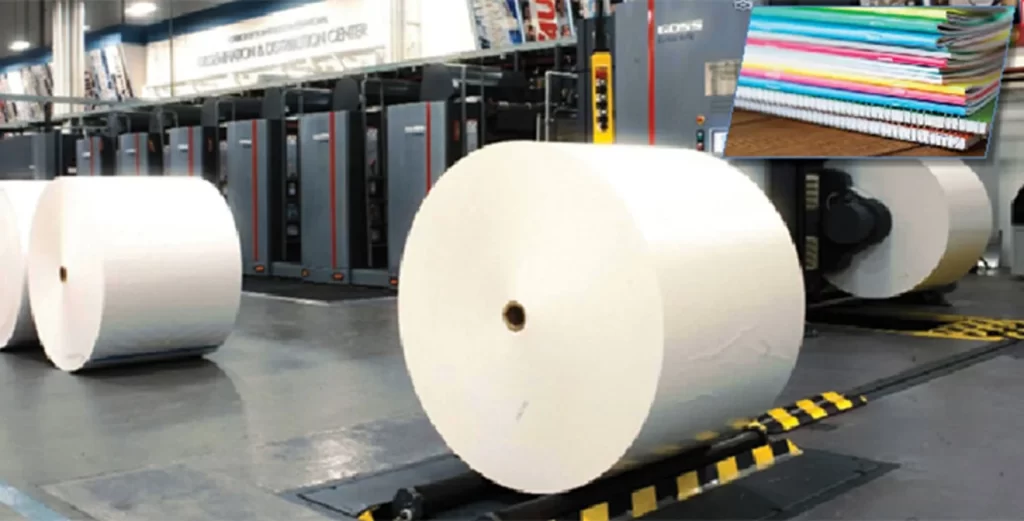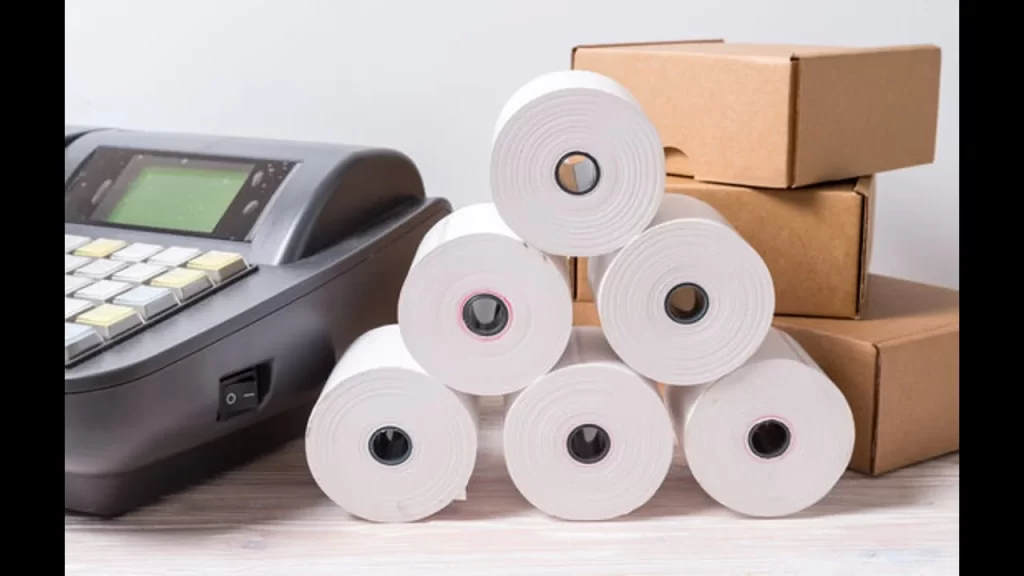Thermal Printing Paper: What it is and How It Works [2025]
Printing industry is getting hype day by day. One of the most common types of print is receipt printing for modern-day businesses. Thermal printing comes in handy to cater to this need.
This printing technology is now booming in different fields for its features like efficiency, speed, and low maintenance. Thermal paper is a special type of paper – the main player of the ground.
Thermal printing differs from traditional types of printing types (inkjet or laser printing) since it relies on heat to produce images directly on the paper without inks or toner. This makes thermal printers small-sized, lightweight, and perfect for mobile use.
Whether you own a retail store, operate a shipping company, or even manage a healthcare facility, you will encounter thermal printer paper in the printing. Choosing the right sticker paper for laser printing will define your print look and printing process.
In this blog let me explain to you about thermal printing paper what is it? What does it look like? What are the benefits of having thermal printing papers? For what purposes these papers are used?
With this information in mind, you are well-placed to make the right choice to achieve the best result.
Table of Contents
What is a Thermal Printing Paper?
Thermal printing paper is a special paper coated with a heat-sensitive material that reacts to heat. The print head generates heat in specific areas when the paper passes through a thermal printer.
This heat activates the chemical coating to change its color for writing suitable text or images on the surface. As no ink, toner, or ribbon is used in printing, it’s a kind of cheap printing with no frequent replacement of consumables.
This technique is becoming a common printing method for tickets, labels, and receipts. It can be resistant to unfavorable conditions such as very high or very low temperatures so that the print does not peel off or fade.

Thermal Paper Sturcture
A thermal printing paper looks like a sandwich; base, precoat, and thermal coat layer by layer. The thermal and precoat layers are coated on the recording side (printing side). The unfolded sandwich looks like the following:
Base Layer
The first layer is meant to give support and thickness to the paper or film. The base layer defines the mechanical properties (tensile and tear strength) of paper/film. The uniformity of the thermal image depends on this layer.
Precoat Layer
The mid-sandwich layer allows the heat generated into the printhead to pass to the thermal layer. It improves the heat insulation, clarity, and anchoring of the thermal layer.
Thermal Layer
This layer is the main player in the whole process. Its purpose is to produce an image on paper with a thermal reaction. In the printing process, the paper turns black when direct heat is applied (thermal reactions start between paper, dyes, and developers).

Types of Thermal Printing Paper
There are two main types of thermal printer paper:
- Direct Thermal Paper: This is the most commonly used thermal paper in printing. This paper reacts directly to heat and produces a permanent image, so it should be stored in a cool and dark place. For receipts, tickets, and label printing, it’s good to go to get long-lasting images.
- Thermal Transfer Paper: This paper requires a separate ribbon coated with a colorant. When heat is applied, the colorant is transferred from the ribbon to the paper to form an image. Thermal transfer paper is often used in barcode labels, medical records, and other applications that require high-quality, durable images.
Now that you know about thermal printing paper and its different types, it is time to discuss the benefits that make it a compelling choice for printing enthusiasts. The coming section will shed light on this matter.

Benefits of Using Thermal Printing Paper
Thermal printing paper offers several benefits that make it a preferred choice for many businesses:
- High-Quality Prints: Thermal printers produce high-resolution prints with sharp, clear images and text. It ensures you’ll get accurate document printing (For which everyone wishes).
- No Ink or Toner: Compared with other printers like screen printer machines, inkjet printers, etc, thermal printers do not require ink or toner cartridges resulting in lower operating expenses and costs of consumables.
- Low Maintenance: Thermal printers are more compact and have fewer components and parts than most printers. It means there are fewer paper jams and maintenance and repair requirements.
- Fast Printing Speed: Thermal printing is super fast thus, it is adopted for use mostly where high-quality prints are needed within a short time.
- Environmentally Friendly: Less consumable items such as ink and toner are used in thermal printing hence it is environmentally friendly and has low wastage.

Common Uses of Thermal Printing Paper
Thermal printer paper is versatile and finds applications across various industries:
- Used in printing receipts, price tags, and barcodes.
- Print shipping labels, tracking numbers, and inventory control.
- Used for printing patients’ wristbands, prescriptions, and various medical documents.
- Perfect for restaurant receipts, hotel check-in vouchers, and tickets for events.
- Used in ATM and point-of-sale (POS) terminals for printouts of transactions.
How to Choose the Right Thermal Printing Paper?
Choosing the right thermal printing paper does all the gloom and boom to your DTF printing business. Going for one of many options sometimes feels overwhelming.
To simply this process, I have compiled a few key factors to consider before making a purchase:

Printer Compatibility
First and foremost, compatibility is key. Until one is not compatible with the other, they can’t make a true bond. Different thermal printers require specified paper types and sizes to work properly.
Ensure the paper you choose is compatible with your thermal printer. Consult with the manufacturer about this issue, he can better guide you. In case, you choose the wrong paper, it can cause paper jams, poor print quality, or damage your printer.
Paper Thickness
It’s worth it to consider the paper thickness to get quality prints. It affects the printer’s performance and the durability of the print.
Thicker paper is generally more durable but may be more expensive. Thicker material means a few paper sheets in a roll, demanding to buy more paper rolls when printing documents. However, customers prefer to go with thicker materials.
Environmental Resistance
If the printed material will be exposed to heat, light, or moisture, choose a paper with appropriate resistance levels. For this purpose, thermal transfer or synthetic paper is the best option to go.
These types of paper are resistant to harsh environmental conditions and give durability to your prints. On the flip side, for temporary receipts printing, direct thermal paper is a more cost-effective choice.
Based on these factors, you can make a wise choice to select the most suitable thermal printer paper for your business. Remember that choosing a proper paper is essential for the overall performance of a thermal printer and achieving the highest quality prints that meet your needs.

Conclusion
So, it’s crystal clear what thermal printing paper looks like and what you have to keep in mind while choosing a thermal paper for your print business.
Remember! Never go in a hurry, take time, and do your research. Because at the end of the day, it’s the only thing that decides the efficiency of your printing projects.
Whether you’re printing receipts, labels, or records, choosing the right thermal paper ensures that your prints are clear, durable, and reliable.
